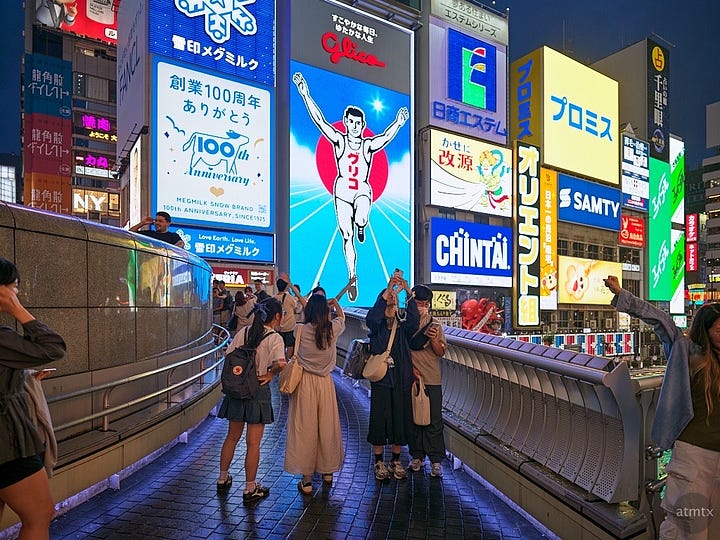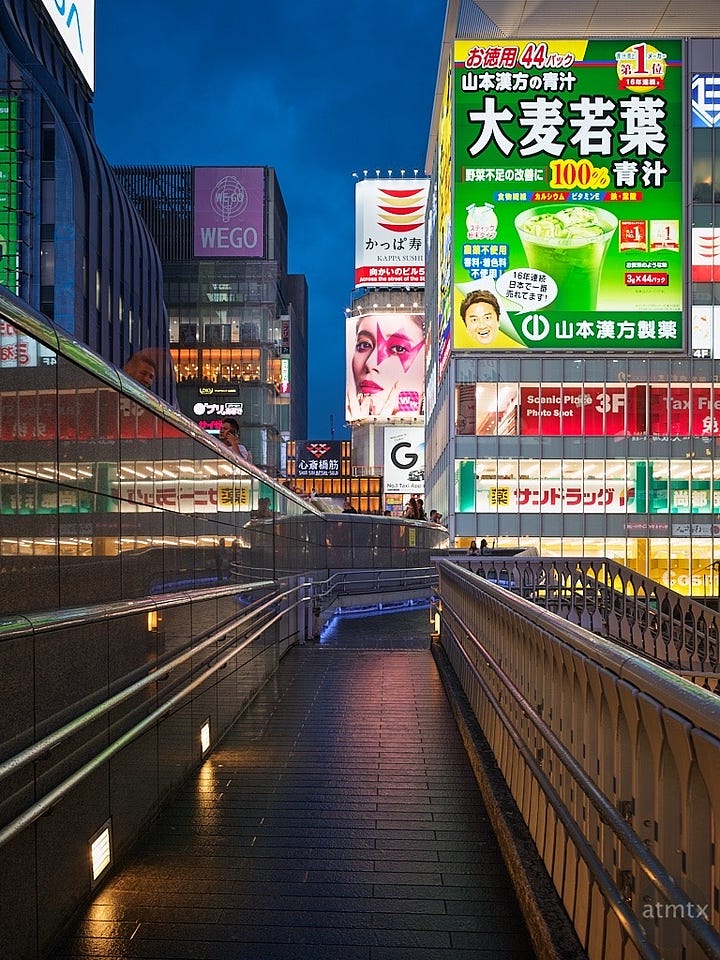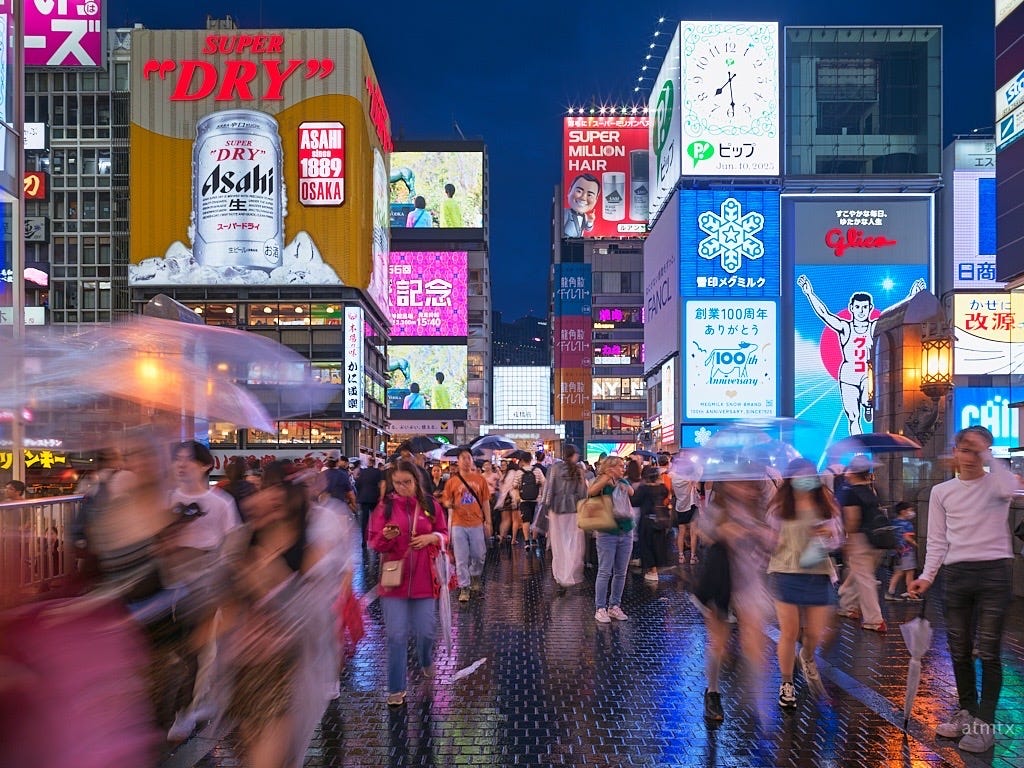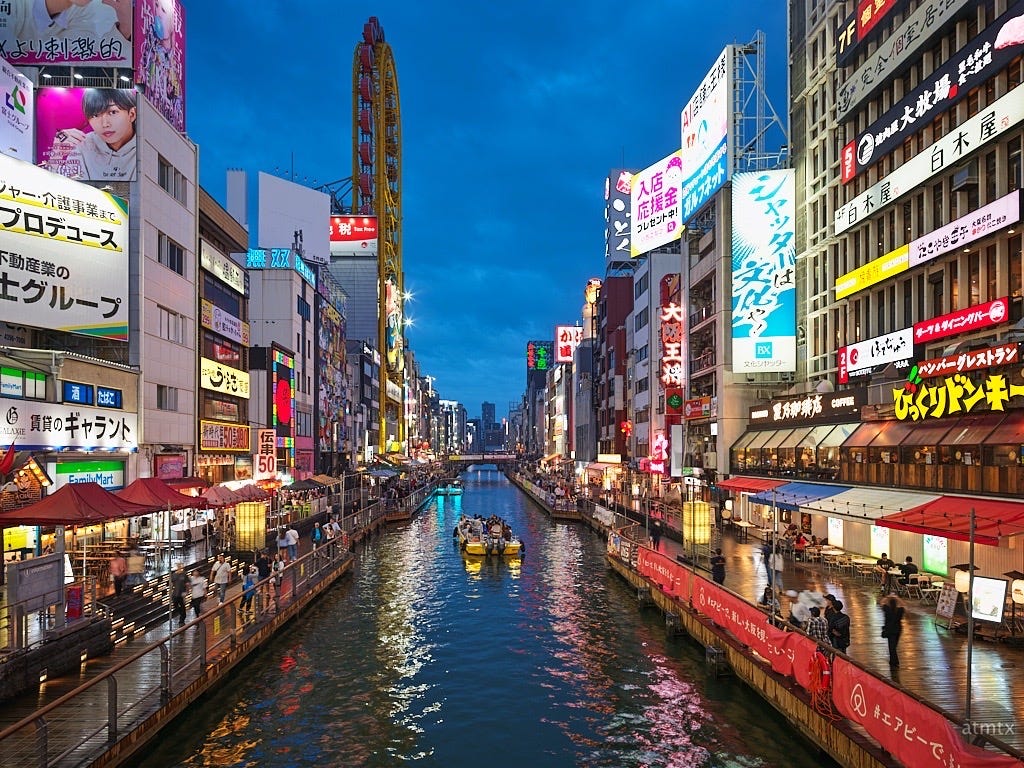Maximum Dynamic Range in Dotonbori
100MP is great, but the Hasselblad X2D’s Dynamic Range is awesome.
We move from Kyoto, Japan’s ancient capital, to Osaka, a bustling center of commerce and the third-largest city in Japan, with a population of 2.7 million. The two are approximately 30 miles apart.
I’m featuring Dotonbori in today’s post, arguably Osaka’s most famous entertainment district. It is known for its especially colorful displays at night. It is an ideal place to test the dynamic range of the Hasselblad X2D, a 100MP, cropped medium-format camera.
I’m facing south from the Ebisu Bridge. You can see part of the famous Glico running man sign on the right. As you can surmise, it’s a popular tourist site. To reduce some of the pedestrian clutter, I opted to shoot with a slow shutter speed. With Hasselblad’s excellent in-body image stabilization (IBIS), I was able to hand-hold at a 1/4-second shutter speed and create a smooth blur of tourists.
Notice how all the signs are cleanly displayed without any overexposure. The trick to making these kinds of pictures with a single photograph (not a blended HDR) is to underexpose significantly and ensure proper exposure on the signage. Then, in post-processing, you raise the shadows. Cameras with less capable sensors will display excessive noise in the shadows using this technique. Not so with the Hasselblad X2D.
The Ebisu pedestrian bridge spans a canal, and here’s the view looking east. I used the same technique mentioned above to ensure high dynamic range. I was also able to use ISO 64, the base ISO, in all of these pictures to maximize the dynamic range. Like any camera, as the ISO sensitivity is increased, noise also increases. Shooting with a camera’s base ISO produces the highest quality image.
Making this photo was significantly easier than the first, since I didn’t need to worry about optimal motion blur. Most of this scene is not moving; thus, a single picture, lasting only 1/4 of a second, was all that was needed. It took several attempts to achieve a smooth blur and a flowing crowd in the opening image.
From the middle of the bridge again, I’m now shooting north, essentially the reverse view from the first photograph. I’m not as fond of this picture for a couple of reasons. First, we don’t have an even distribution of people on both sides of the frame. Additionally, to capture more of the buildings, the camera is tilted upwards. I decided not to completely perspective correct like the first two pictures.
On the other hand, we have great color and dynamic range.


In these last two images, we see the view from the sides of the bridge, which are slightly less crowded. On the left, we have a famous Glico Man and tourists imitating his pose. Years ago, I remember this sign in neon. I used a faster 1/45 second shutter to reduce motion blur and capture a sharp perspective of the tourists.
On the right, a rare view of the bridge without any foreground people. I would love to make people-free photos of the area, but this will be impossible to do in the early evening. The sunset was at about 7:15, and I was there to capture some of the blue hour.
I wonder how late I would need to shoot to minimize the pedestrians? I wasn’t about to find out, and since I needed to take trains, which stop running somewhere after midnight.




